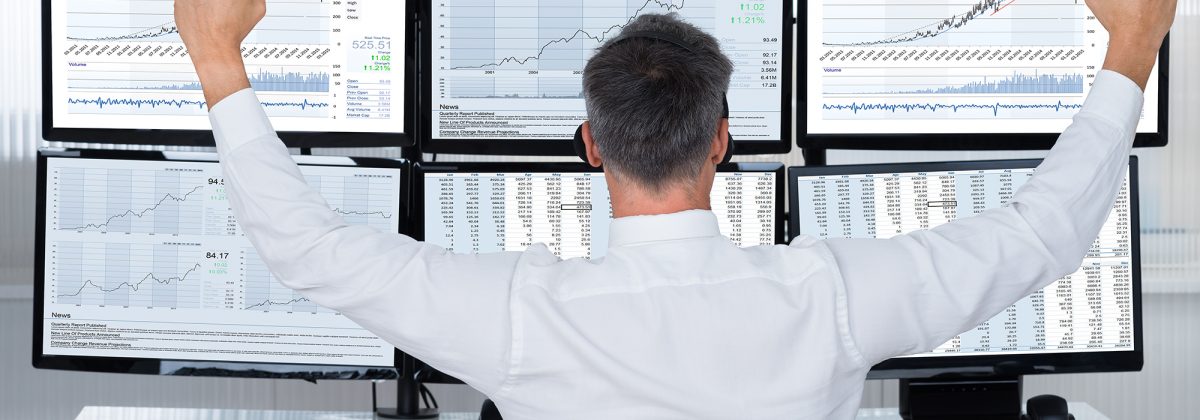How to Become a Successful Trader?

The forex market offers some great trading opportunities, but only for those who know how to play the game. Most newbies believe that trading is only about setting up charts and entry-exit signals. But sound trading strategies, risk management and control over emotions are equally important. So, here are some tips for traders to stay on the path to success.
Learn about the Forex Market
The first thing to consider is forex education. Traders need to have clear insight into how the market functions, the various currency pairs, including their behaviour, bid-ask prices and trading systems. Important concepts like pips, spreads, liquidity, leverage, slippage, commissions and their effects on profit potential need to be understood.
Also important is the role of fundamental and technical analysis. It is vital to gain familiarity with the different technical indicators, as well as the impact of various geo-political and economic factors on forex rates. There are various economic indicators that affect currency movements, and these releases need to be tracked through an Economic Calendar.
Choose a Regulated Broker
The support of a regulated broker plays a pivotal role in the success of a trader. Large and licensed brokers provide the best platforms for fast trade execution, along with tighter spreads and minimal slippage. They not only help with critical forex education, but also ensure fund safety and strong risk-management tools.
Regulated brokers do not resort to price manipulation and neither do they trade against clients. The FCA, ESMA and CySEC are among the top regulatory licenses in the forex industry. Traders should also check the execution model of the broker. Many offer Straight Through Processing (STP) and many others are ECN brokers. This will determine the level of price execution and access to market liquidity.
Have a Solid Trading Plan
It is necessary to set a quantifiable profit goal, something that is realistic. There should be a written set of rules, with clear entry, exit, stop-losses and money management measures. Electronic trading systems today allow traders to back-test a plan before applying it in the live markets. Demo accounts are great learning tools offered by brokers, to help traders test the viability of their trading strategies. It can further indicate the plan’s logic.
Strategies need to be based on the timeframe of trading activities. Some traders trade full-time, while others pursue it part-time. So, create a plan that is based on how much time you actually wish to put into trading.
Once a strategy has been decided, stick to it. Resorting to trades outside the plan, often proves to be a bad decision.
Treat it Like a Business
Like any business, trading also has its own ups and downs. Every trader, even George Soros, experiences both gains and losses. So, keep your focus on learning and growing as a trader. Failures have the power to teach you much more than wins do. The key to success is to do your own research, apart from learning from expert traders, to maximise your business potential. This includes not taking unnecessary risks and employing efficient risk management tools, like stop-loss and take-profit orders, to protect your capital. Learning and practicing different trading strategies on a demo account is a good way to improve your skills.
Another aspect of responsible trading is to manage the risk-reward ratio. While risky trades offer greater profit potential, they can wipe out entire accounts if the market goes in the opposite direction. So, invest only what you can afford to lose. Most traders risk about 1% to 2% of their trading capital to maintain their accounts.
Keep Control of Emotions
Trading requires patience and discipline. Patience means waiting for the price to reach certain levels, which would qualify as entry or exit signals for the system. When the system indicates entry at a certain point and the market fails to reach it, it would be wise to move on to the next opportunity.
This takes discipline, the ability to not second-guess the strategy and the system. Discipline is also the ability to stop trades when the system triggers a stop-loss. Emotions like greed, fear and revenge can be harmful for traders. Setting up pre-defined stop-loss levels and trailing stops can help overcome momentary impulses and prevent decisions spurred by emotions.
It is important to remain objective and confident in your decisions, and to an extent this confidence is derived from strong trading systems. It is vital to trade on a system that you trust, to be able to focus on the market.
Maintain a Trade Journal
Monitoring and evaluating your trades is key to growing as a trader. By recording each trading decision in a trade journal, traders can figure out deficiencies in their current strategies. It could be the strategy, the trade terminal or even an external stressor, such as poor health, which contributes to failure.
A trader dealing with health problems and personal setbacks might not be able to make informed and objective decisions. In such circumstances, it is necessary to take a break from trading, re-evaluate and then come back stronger.
Learn to Switch Between Fundamental and Technical Analysis
While fundamental traders believe that the price of an asset doesn’t necessarily represent its true value, technical traders rely on past price action to determine future movements. Both strategies can be used in combination effectively.
Technical analysis means the ability to learn the behaviour of different currency pairs in various market conditions. You will find that certain pairs tend to be less chaotic in their movements than others. The trading system’s personality has to match the instrument’s behaviour. For instance, those who trade the USD/JPY pair often find Fibonacci retracement levels more reliable than other methods. It is vital to learn which indicators are more effective in short-term and long-term conditions. The aim is to identify trends that can provide suitable trading opportunities.
Being aware of market fundamentals is necessary too. For instance, the release of Central Bank press reports is often followed by huge volatility and decreased liquidity for certain currency pairs. So, learn how to correlate trading signals with external geo-political events.
It is important to keep track of the bigger picture. Just like a loss doesn’t mean the end of trading, a gain is also only one step on the path to successful, long-term trading.




